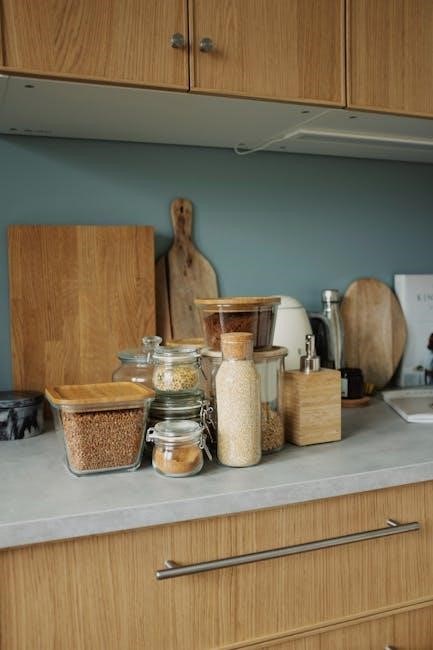
Pantry Cabinet Plans PDF: An Overview
Pantry cabinet plans in PDF format offer a convenient and accessible way to design and build your own storage solutions. These digital blueprints provide detailed instructions, measurements, and material lists. Perfect for DIY enthusiasts looking to customize their kitchen space.
Embarking on a DIY pantry cabinet project offers a rewarding way to enhance your kitchen storage while tailoring the design to your specific needs. Utilizing readily available pantry cabinet plans, especially in PDF format, simplifies the construction process, providing detailed guidance from start to finish. This hands-on approach not only saves money but also allows for complete customization, ensuring the finished cabinet perfectly complements your kitchen’s aesthetic and functional requirements.
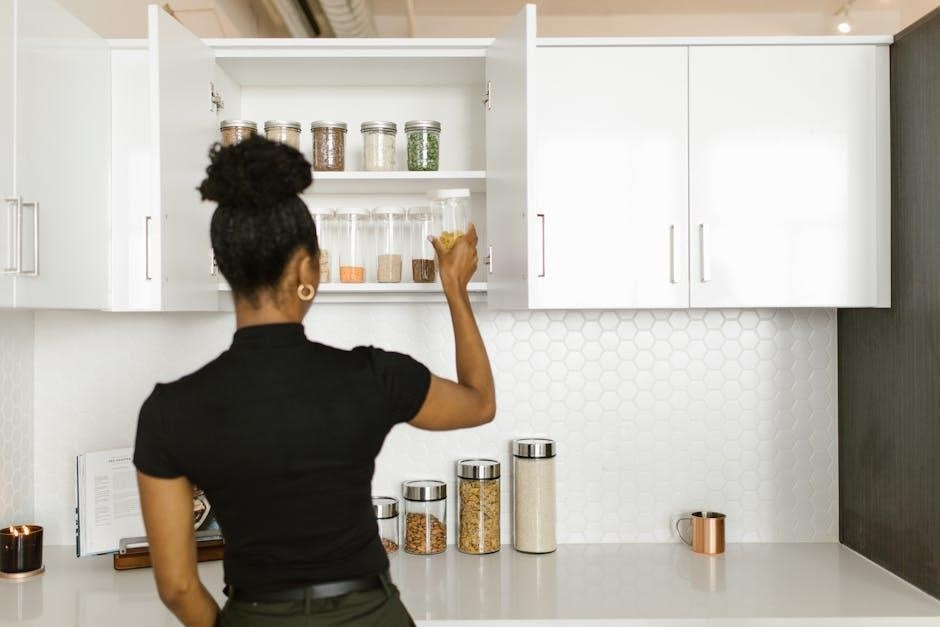
Benefits of Using Pantry Cabinet Plans
Pantry cabinet plans provide structured guidance, ensuring accuracy and efficiency in your DIY project. They offer cost savings, customization options, and a clear roadmap, making cabinet construction accessible to all skill levels.
Cost Savings with DIY Projects
Embarking on a DIY pantry cabinet project offers substantial cost savings compared to purchasing pre-made cabinets. By utilizing readily available PDF plans, you eliminate retail markups and installation fees. You can control material costs, opting for budget-friendly options or repurposing existing lumber. The initial investment in tools pays off over time. Building yourself minimizes labor expenses, making a customized pantry affordable. Free plans are available online.
Customization Options with PDF Plans
PDF pantry cabinet plans offer unparalleled customization. Unlike store-bought options, DIY plans let you tailor dimensions to fit specific spaces. You can choose wood types, finishes, and hardware to match your decor. Adjustable shelves, drawers, or pull-out organizers can be seamlessly integrated. Detailed plans provide flexibility to modify designs, ensuring your pantry perfectly meets your needs. Create a functional and aesthetically pleasing storage solution with customized options.
Types of Pantry Cabinet Plans Available
Pantry cabinet plans come in various types to suit different needs and spaces. Common options include freestanding, built-in, and corner pantry designs. Each offers unique storage solutions tailored to your kitchen layout.
Freestanding Pantry Cabinet Plans
Freestanding pantry cabinet plans offer flexibility and ease of installation, making them a popular choice for many homeowners; These cabinets don’t require permanent attachment to walls, allowing you to move them as needed. They are available in various sizes and styles, from narrow cabinets perfect for small kitchens to larger units with adjustable shelves and drawers. These plans often include detailed instructions for assembling the cabinet frame, installing doors, and adding finishing touches, ensuring a straightforward building process for DIY enthusiasts.
Built-In Pantry Cabinet Plans
Built-in pantry cabinet plans are designed to seamlessly integrate with your existing kitchen cabinetry, providing a custom and cohesive look. These plans typically involve more intricate construction techniques compared to freestanding options, as they often require precise measurements and attachment to walls. Built-in pantries can maximize space utilization by fitting snugly into alcoves or corners. The PDF plans include detailed instructions for framing, installing shelves, and ensuring a flush finish with surrounding cabinets, resulting in a professional-looking storage solution that enhances your kitchen’s functionality and aesthetics.
Corner Pantry Cabinet Plans
Corner pantry cabinet plans are specifically designed to optimize storage in often-underutilized corner spaces within a kitchen. These plans typically feature angled designs, maximizing interior volume while fitting neatly into the corner. Corner pantries can be either freestanding or built-in, offering flexibility in design and installation. PDF plans for corner pantries often include detailed instructions for constructing the unique angled frame, installing shelves that conform to the corner shape, and ensuring easy access through specialized door designs. This makes them a valuable addition for efficient kitchen organization.
Key Features to Look for in Pantry Cabinet Plans
When selecting pantry cabinet plans, prioritize detailed cut lists and dimensions for accurate material preparation. Step-by-step instructions with clear diagrams are essential for easy assembly. Also, look for comprehensive material lists and recommended tool suggestions.
Detailed Cut Lists and Dimensions
A crucial aspect of any pantry cabinet plan is the inclusion of detailed cut lists and precise dimensions. These elements ensure accuracy in material preparation, minimizing waste and reducing the risk of errors during construction; A comprehensive cut list specifies the exact size and quantity of each component required for the pantry cabinet. Accurate dimensions are vital for ensuring that the cabinet fits seamlessly into your designated space and functions as intended, providing a professional-looking finished product.
Step-by-Step Instructions with Diagrams
The effectiveness of pantry cabinet plans hinges on clear, step-by-step instructions accompanied by illustrative diagrams. These visual aids provide a comprehensive guide throughout the building process, ensuring that even those with limited woodworking experience can successfully construct their own pantry cabinet. Each step should be logically sequenced and easy to follow, with diagrams offering a visual representation of the task at hand. This combination of written instruction and visual support minimizes ambiguity and promotes accurate assembly, resulting in a well-built and functional pantry cabinet.
Material Lists and Recommended Tools
Comprehensive pantry cabinet plans should include a detailed material list, specifying the exact quantity and type of wood, hardware, and fasteners required for the project. This list streamlines the purchasing process, preventing unnecessary trips to the hardware store. Furthermore, the plans should outline the recommended tools needed for each step, ensuring that builders have the appropriate equipment at their disposal. This proactive approach promotes efficiency and accuracy, enabling builders to complete the project with ease and achieve professional-quality results in their pantry cabinet construction.
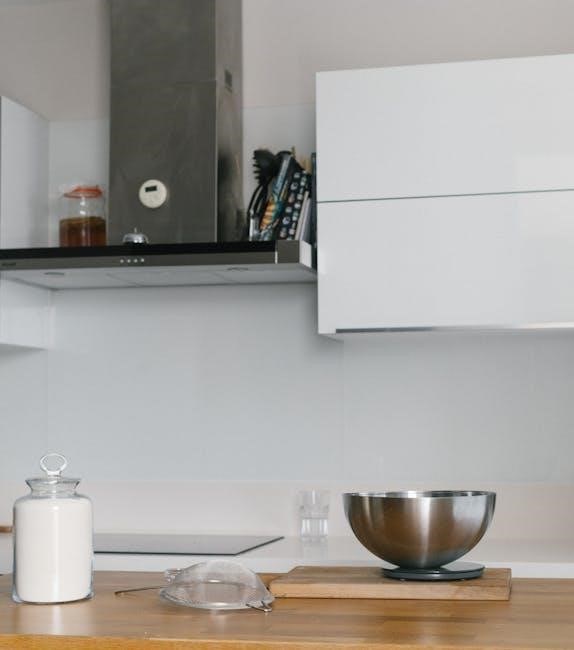
Finding Free Pantry Cabinet Plans Online
Discovering free pantry cabinet plans online can be a cost-effective starting point for your DIY project. Numerous websites offer downloadable PDFs, providing various designs and styles for creating your own custom pantry.
Websites Offering Free PDF Downloads
Several platforms provide free PDF downloads for pantry cabinet plans, catering to various skill levels and design preferences. Websites like Buildsomething.com and woodworking enthusiast forums often host user-submitted plans. Additionally, certain woodworking blogs and online DIY communities may offer complimentary pantry cabinet blueprints as a resource for their readers. Always verify the plan’s accuracy and completeness before starting your project.
Considerations for Using Free Plans
When utilizing free pantry cabinet plans, carefully assess the plan’s quality and completeness. Ensure that the plan includes detailed measurements, a comprehensive cut list, and clear assembly instructions. Be prepared to adapt the plan to suit your specific space requirements and skill level. Free plans may lack the detailed support and advanced features found in purchased plans.
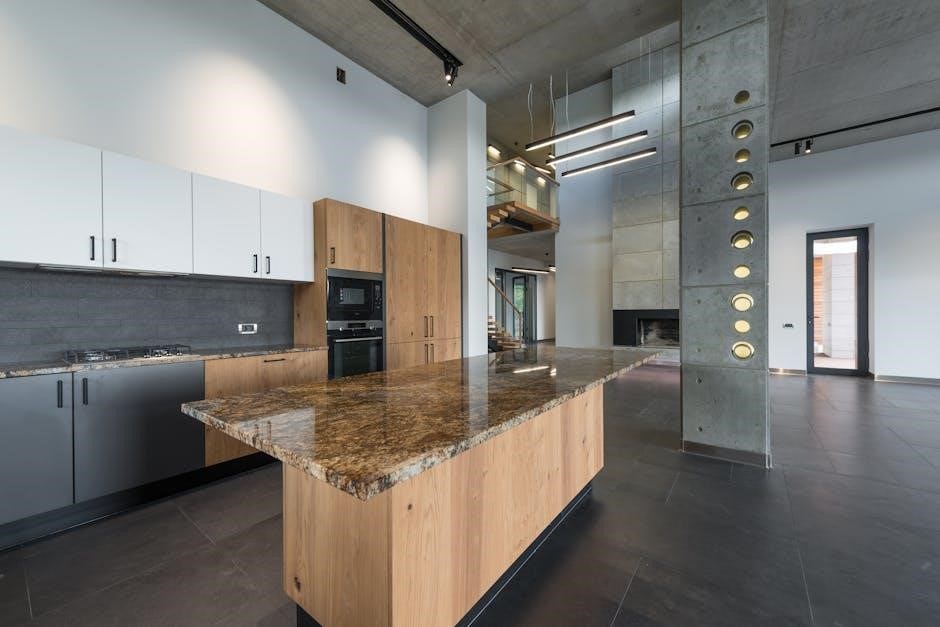
Purchasing Pantry Cabinet Plans
Purchasing pantry cabinet plans provides access to professionally designed blueprints. These plans often include detailed instructions, material lists, and technical support. Paid plans ensure a smoother building process and higher-quality finished product.
Benefits of Paid Plans (e.g., More Detail, Support)
Opting for paid pantry cabinet plans unlocks a wealth of advantages compared to free alternatives. These plans typically boast significantly more detail, offering comprehensive step-by-step instructions, precise measurements, and professional diagrams. Furthermore, paid plans often include dedicated customer support, providing assistance and guidance throughout the building process. This ensures clarity and helps navigate potential challenges, ultimately leading to a more successful and satisfying DIY experience. Paid plans also grant access to advanced design features and customization options.
Where to Buy High-Quality PDF Plans
Finding high-quality PDF plans for pantry cabinets requires careful consideration of several factors. Reputable online retailers specializing in woodworking plans are excellent sources, often showcasing a diverse selection from various designers. Independent woodworking websites and forums also offer plans, sometimes directly from the creators. Etsy can be a great resource for unique designs. Look for plans with detailed descriptions, customer reviews, and clear previews to ensure they meet your needs. Consider purchasing from sites that offer a satisfaction guarantee or customer support.
Essential Tools and Materials for Building a Pantry Cabinet
Constructing a pantry cabinet requires specific tools like a saw, drill, and measuring tools. Essential materials include wood, fasteners, and hardware. Selecting the right components ensures a sturdy and functional finished product.
Wood Selection and Preparation
Choosing the right wood is crucial for your pantry cabinet project. Plywood, MDF, and solid wood are common choices, each offering different aesthetics and structural properties. Consider factors like cost, durability, and the desired finish. Proper preparation involves cutting the wood according to the plan’s dimensions and sanding the surfaces smooth for painting or staining. Always ensure the wood is dry and free of defects before assembly. This careful selection and prep is key.
Hardware and Fasteners
Selecting the appropriate hardware and fasteners is essential for the structural integrity and functionality of your pantry cabinet. Hinges, knobs, pulls, and drawer slides contribute to the cabinet’s usability and aesthetics. Screws, nails, and wood glue are vital for securely assembling the components. Consider the weight and frequency of use when choosing hardware. Opt for high-quality materials to ensure longevity and prevent premature wear. Proper installation is key. Ensure compatibility of the materials.
Step-by-Step Guide to Building a Basic Pantry Cabinet
Follow this step-by-step guide to construct your own basic pantry cabinet. From cutting the wood to assembling the frame and installing shelves, this section provides clear instructions for a successful DIY project.
Assembling the Cabinet Frame
The initial stage involves assembling the cabinet frame, a critical step for structural integrity. Begin by connecting the side panels to the top and bottom supports using wood glue and screws. Ensure precise alignment and squareness during assembly. Pocket holes can be used for added strength. Clamps are essential to hold pieces firmly until the glue dries. Double-check all measurements before securing the joints. A solid frame is the foundation for a sturdy and functional pantry cabinet. This carefully built frame will ensure your cabinet lasts for years to come.
Installing Shelves and Doors
Installing shelves and doors brings your pantry cabinet to life. For shelves, measure and mark desired locations inside the frame. Secure shelves using shelf supports or by screwing directly into the side panels. When installing doors, use hinges appropriate for your cabinet style. Ensure proper alignment and smooth operation. Magnetic catches or other closing mechanisms can be added. Take your time and properly align the shelves and doors to ensure a professional look. Proper installation is key for both functionality and aesthetics of your pantry cabinet.
Customizing Your Pantry Cabinet
Customizing your pantry cabinet allows you to tailor the storage to your specific needs. Consider adding unique features, finishes, and organizational elements. Adapt the design to perfectly match your kitchen’s aesthetic and maximize its functionality.
Adding Adjustable Shelves
Adding adjustable shelves to your pantry cabinet significantly enhances its versatility and storage capacity, allowing you to accommodate items of varying heights. This feature enables you to reconfigure the shelving arrangement as your storage needs evolve. Utilizing shelf pins or tracks makes it simple to reposition shelves, optimizing space for groceries, appliances, and other kitchen essentials. Adjustable shelves provide a customizable storage solution, ensuring your pantry remains organized and efficient, adapting to your unique requirements.
Incorporating Drawers or Pull-Outs
Incorporating drawers or pull-outs into your pantry cabinet design dramatically improves accessibility and organization, especially for items stored deep within the cabinet. Drawers allow easy retrieval of goods, while pull-out shelves bring items to the forefront, minimizing the need to reach and rummage. These features can be integrated into pantry cabinet plans to offer a more ergonomic and user-friendly storage solution. Smooth-gliding hardware ensures effortless operation, enhancing the overall functionality and convenience of your custom-built pantry.
Tips for Success When Building a Pantry Cabinet
Building a pantry cabinet requires careful planning and execution. Accurate measurements are crucial, along with proper joinery techniques for stability. Selecting quality materials and following the plans closely ensures a successful and functional finished product.
Ensuring Accurate Measurements
Accuracy is paramount when constructing a pantry cabinet; precise measurements directly impact the final product’s fit and functionality. Double-check all dimensions against the PDF plans before cutting any wood. Use a reliable measuring tape and a square to ensure straight lines and accurate angles; Slight discrepancies can accumulate, leading to misaligned doors or unstable shelves. Take your time, measure twice, and cut once to avoid costly errors and ensure a professional-looking finished pantry cabinet. This attention to detail will contribute significantly to the project’s overall success.
Proper Joinery Techniques
Mastering joinery techniques is crucial for a sturdy and long-lasting pantry cabinet. Common methods include butt joints, rabbet joints, dadoes, and dovetails. Butt joints are simplest, but require reinforcement with screws or dowels. Rabbet joints offer increased strength by interlocking edges. Dadoes create channels for shelves, ensuring stability. Dovetails, while more complex, provide exceptional strength and a professional aesthetic. Select the appropriate joinery method based on the plan’s recommendations and your skill level. Practice on scrap wood to perfect your technique before assembling the final cabinet components for optimal results.
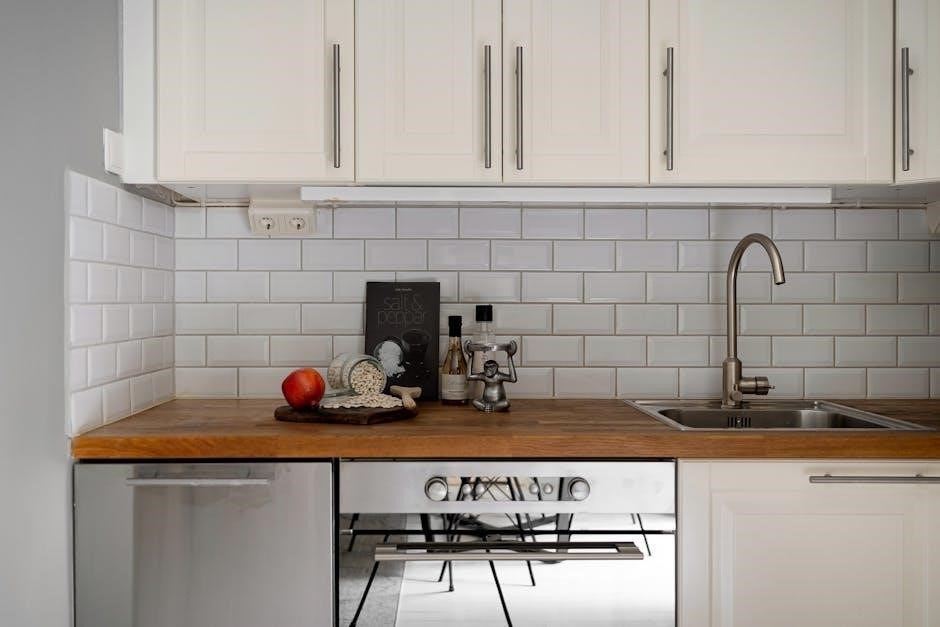
Troubleshooting Common Issues
Building a pantry cabinet can present challenges. Addressing issues like instability, door misalignment, or shelf sagging is crucial. Accurate measurements, proper joinery, and quality hardware are essential for a successful and functional outcome.
Cabinet Instability
One common issue when building a pantry cabinet is instability. This can arise from uneven flooring, inadequate bracing, or improper joinery. Ensure the base is level and consider adding shims for uneven surfaces. Reinforce corners with brackets and use strong, reliable fasteners. A solid back panel, securely attached, significantly increases stability. Check all connections for tightness during assembly. Distribute weight evenly within the cabinet to prevent tipping. Addressing these points will enhance the cabinet’s structural integrity.
Door Alignment Problems
Door alignment can be tricky. Issues often stem from uneven cabinet frames or improperly installed hinges; Begin by ensuring the cabinet frame is square and level. Use shims behind the hinges to adjust their position. Check that the doors are not warped. Adjust the hinges screws for minor corrections. If the problem persists, consider using adjustable hinges. For larger misalignments, re-evaluate the frame construction. Precise measurements and careful installation are key to achieving perfect door alignment, and ensure smooth, effortless operation.